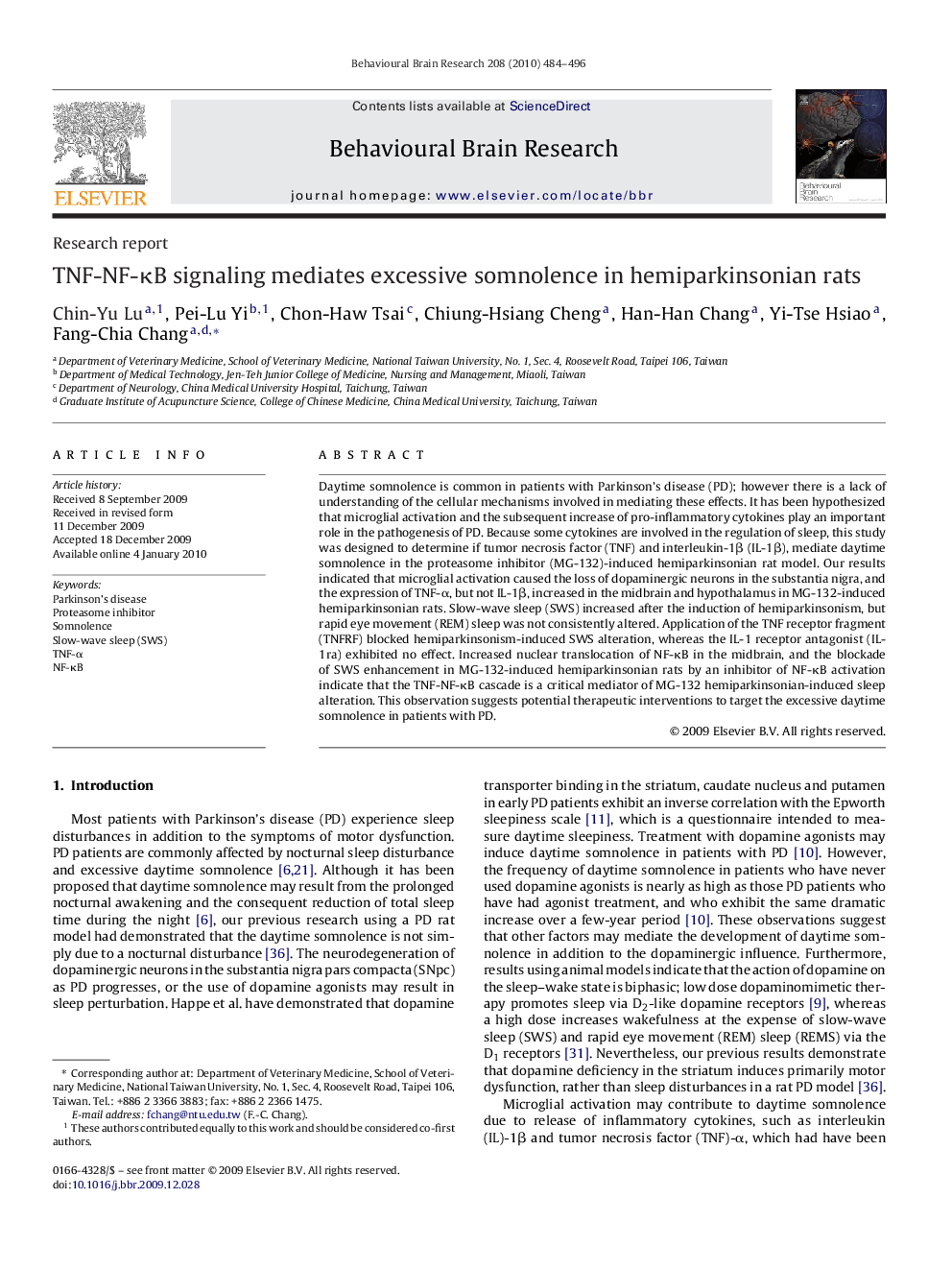| Article ID | Journal | Published Year | Pages | File Type |
|---|---|---|---|---|
| 4314372 | Behavioural Brain Research | 2010 | 13 Pages |
Daytime somnolence is common in patients with Parkinson's disease (PD); however there is a lack of understanding of the cellular mechanisms involved in mediating these effects. It has been hypothesized that microglial activation and the subsequent increase of pro-inflammatory cytokines play an important role in the pathogenesis of PD. Because some cytokines are involved in the regulation of sleep, this study was designed to determine if tumor necrosis factor (TNF) and interleukin-1β (IL-1β), mediate daytime somnolence in the proteasome inhibitor (MG-132)-induced hemiparkinsonian rat model. Our results indicated that microglial activation caused the loss of dopaminergic neurons in the substantia nigra, and the expression of TNF-α, but not IL-1β, increased in the midbrain and hypothalamus in MG-132-induced hemiparkinsonian rats. Slow-wave sleep (SWS) increased after the induction of hemiparkinsonism, but rapid eye movement (REM) sleep was not consistently altered. Application of the TNF receptor fragment (TNFRF) blocked hemiparkinsonism-induced SWS alteration, whereas the IL-1 receptor antagonist (IL-1ra) exhibited no effect. Increased nuclear translocation of NF-κB in the midbrain, and the blockade of SWS enhancement in MG-132-induced hemiparkinsonian rats by an inhibitor of NF-κB activation indicate that the TNF-NF-κB cascade is a critical mediator of MG-132 hemiparkinsonian-induced sleep alteration. This observation suggests potential therapeutic interventions to target the excessive daytime somnolence in patients with PD.
